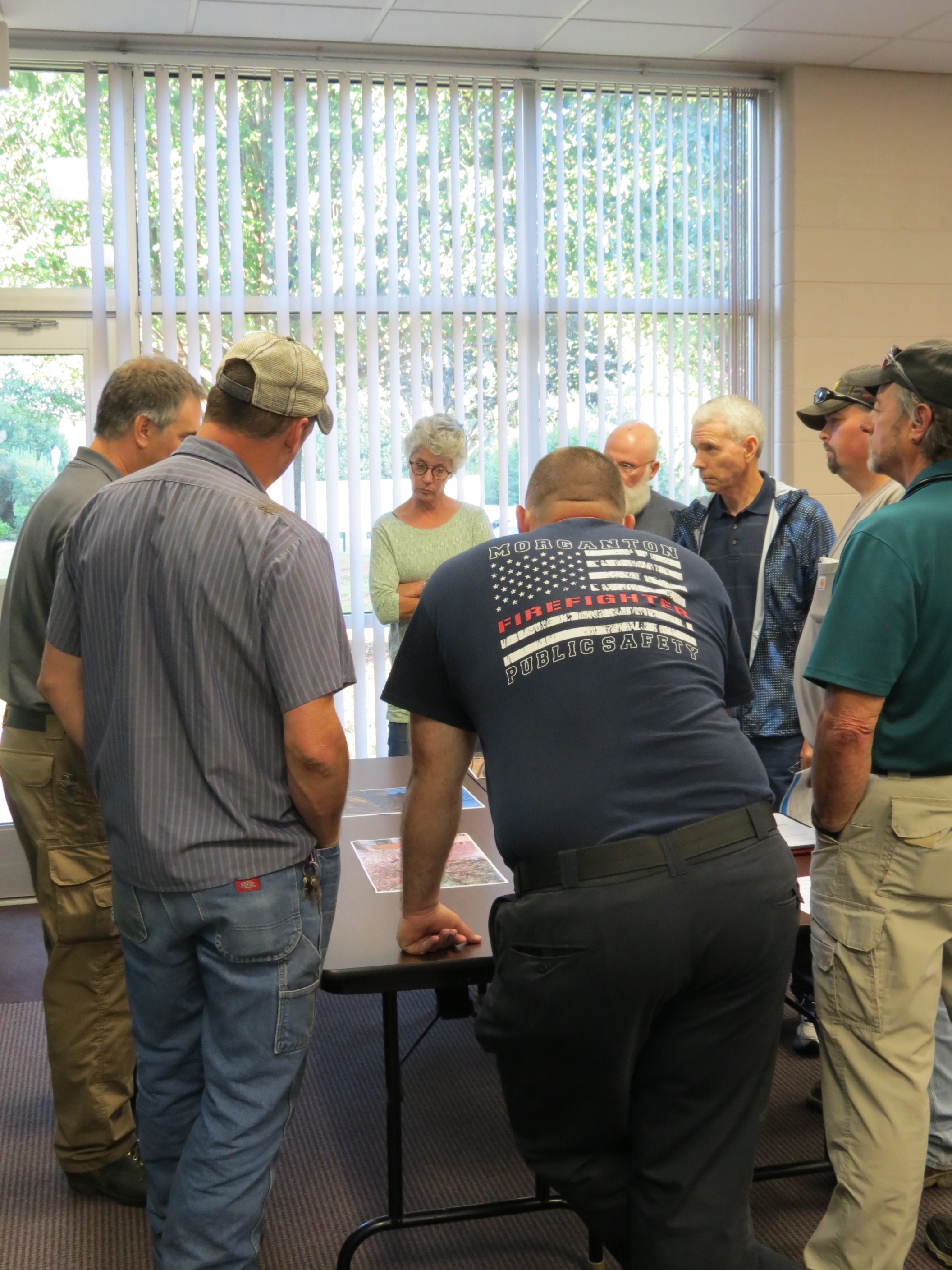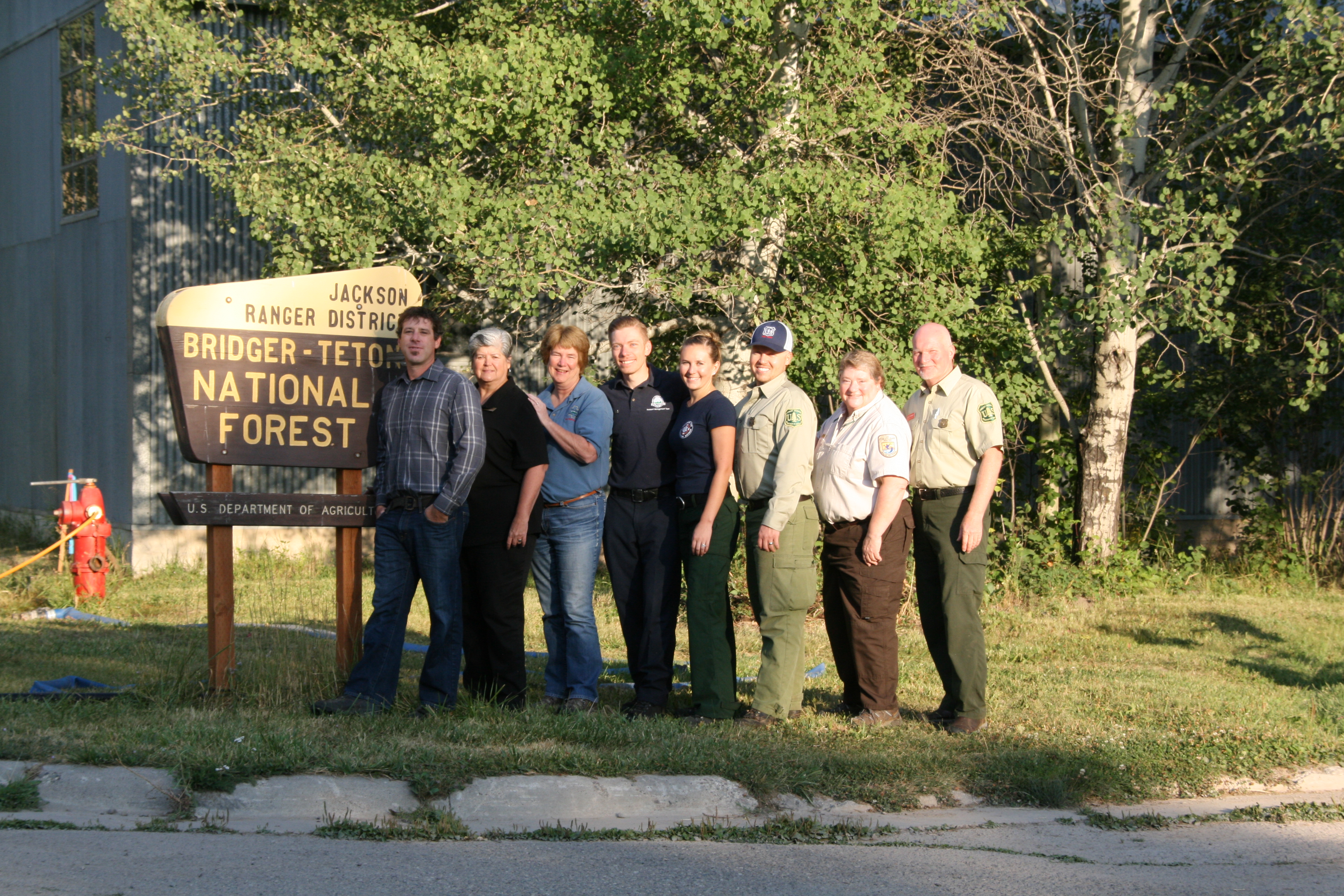Community Mitigation Assistance Team
What Community Mitigation Assistance Teams (CMATs) Do
During incidents: CMATs work closely with Incident Management Teams, the Forest Service or other land management agencies and community residents and leaders to identify mitigation opportunities before a fire impacts the community.
CMATs work with local partners to identify and help resolve mitigation challenges and build long-term mitigation efforts using best practices.
The team uses SWOT (strengths, weaknesses, opportunities and threats) analysis, one-on-one interviews, mentoring, best community risk reduction practices, mini-workshops, Community Wildfire Protection Plans (CWPPs), risk and fire occurrence maps, home assessments, pertinent research, demographics, experience, and close community collaboration to help communities move mitigation forward.
Every assignment is different and dictated by individual community needs.
CMATs don’t provide wildfire prevention/messaging, produce literature/product development or perform the work of the community/ordering authority.
When to consider a Community Mitigation Assistance Team
The community is at medium to high risk of wildfire and has an identified mitigation challenge.
There is an existing wildfire mitigation organization/coalition including local, state, and federal land management partners.
Pertinent local, state, and federal partners have the capacity and desire to work closely with the team during the assignment and to implement resulting recommendations including follow-up reporting of accomplishments.
Scope of the project should provide a good return on investment (long and short term) to justify cost to deploy a team.
The ordering authority must provide a working location, internet access, and support for the CMAT during deployment.
Ordering a Community Mitigation Assistance Team
Any community that meets the conditions described above may request a CMAT through the local National Forest, Incident Command Team, or other federal land manager. Requests are vetted by the National CMAT Lead based on enabling conditions, need, and likelihood of success.
Want to be a Community Mitigation Assistance Team member?
Team members are highly proficient wildland urban interface mitigation specialists with extensive experience in community mitigation best practices and skills in analytical thinking, problem solving, wildfire behavior, collaboration, communication, and teamwork. Must be familiar with incident command.
Assignments are usually 7-14 days/12-14 hours per day; laptops, cell phones, and personal credit cards are required (expenses are reimbursed).
Team members are ordered through IROC following interagency incident business management practices and are paid based on IROC status (agency employee, AD, or cooperator/partnership agreement) and reimbursed for travel and per diem per policy.
Team members report to the team lead who functions as the liaison with the local Forest and community.
If you are interested in becoming a team member fill out the application and e-mail to the CMAT Coordinator.
Assignments
Lowman Community Wildfire Mitigation Action Plan, September (PDF, 13.1 MB)
Croatan National Forest, North Carolina (arcgis.com)
Evergreen, CO
Mitigating Wildfire: Evergreen Needs Everyone (arcgis.com)
Mount Hood National Forest, OR
A Corridor of Collaboration, (PDF, 2.7 MB)
Sevier County
Actions Speak Louder than Words, (PDF, 2.3 MB)
Grand County
Grand County Turns Troublesome Into Triumph, (arcgis.com)
Lake County
Aligning to Action, (PDF, 4.5 MB)
Santa Fe National Forest
Greater Santa Fe Fireshed Coalition, (PDF, 3 MB)
Pike San Isabel National Forest
Partnering to Move Mitigation Forward, (PDF, 3 MB)
Alpine Wyoming
Alpine Area, (PDF, 3.7 MB)
Montana Wildfires
Missoula County, (PDF, 752 KB)
Spring Creek Fire
Mitigating Mountains, (PDF, 748 KB)
Dollar Ridge Fire
Crossing Boundaries for Collaboration, (PDF, 2 MB)
Chetco Bar
Ideas to Action, (PDF, 713 KB)
Pisgah National Forest
New Insights, New Partners, (PDF, 629 KB)
Pike San Isabel National Forest
A Blueprint for Mitigation, (PDF, 13 MB)
Bridger Teton National Forest
Moving Mitigation Forward: Opportunities for TAWPC, (PDF, 5 MB)
The Chelan Complex - Leavenworth
Executive Summary, (PDF, 5.7 MB)
For more information contact the National Community Wildfire Mitigation Program Manager
Jonathan Bruno
Chief Operations Officer
Phone: 719-433-6775
Website: https://co-co.org/






